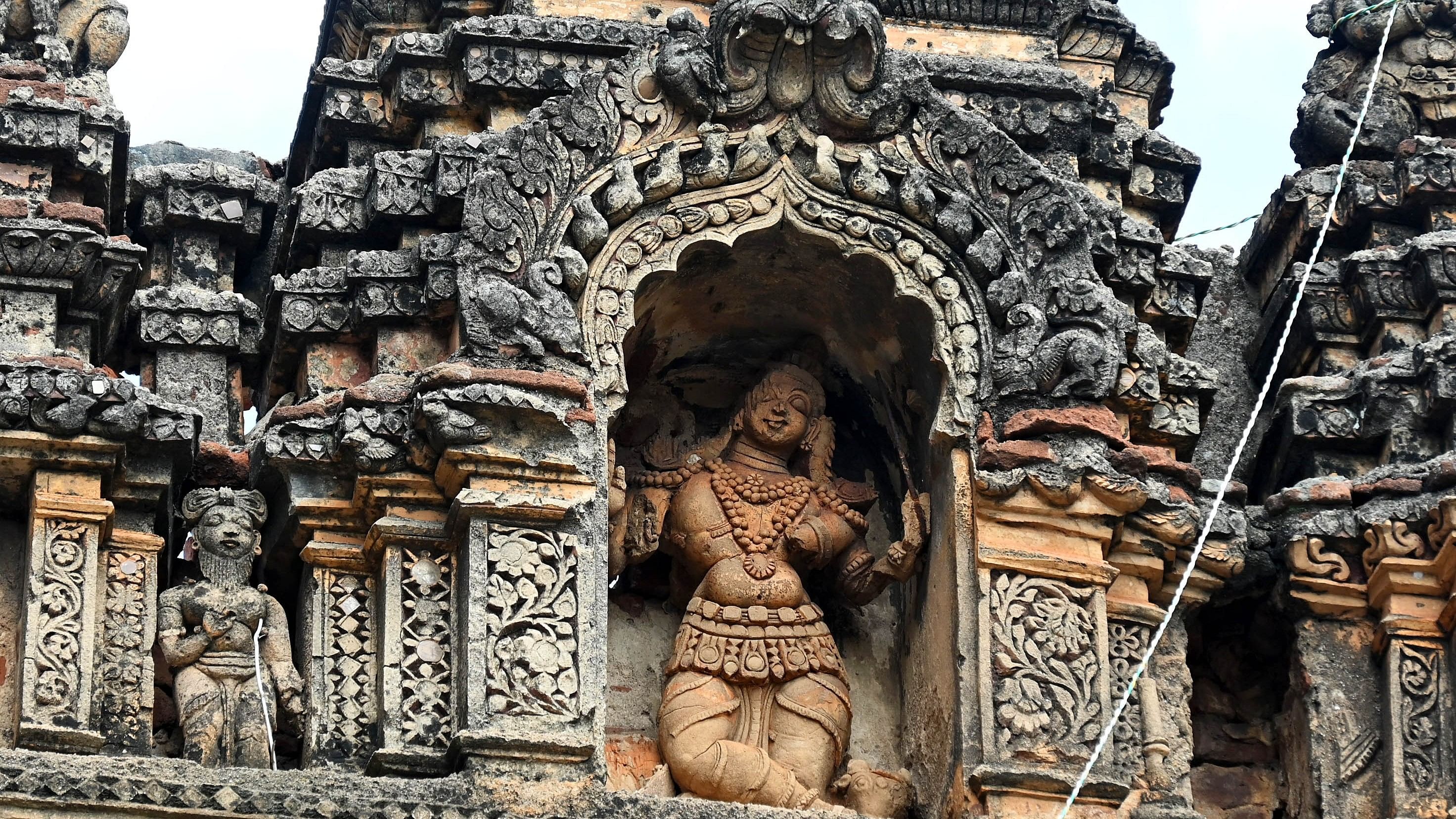
Chikkajala Old Fort near Bengaluru Airport Road.
Credit: DH Photo/Pushkar V
When tourists visit Bengaluru, they often explore iconic destinations like Lalbagh, Cubbon Park, or Vidhana Soudha, which never fail to leave them in awe. Yet, Bengaluru, with its rich history spanning over 1,500 years, holds a hidden treasure trove of lesser-known, historically significant places in its vicinity. While some have been diligently protected and preserved through the efforts of activists and government support, many others languish in obscurity and are vulnerable to encroachment.
One such historical gem lies along National Highway (NH-7), the route to Kempegowda International Airport. The Chikkajala fort, though not as ancient as Bengaluru itself, is fast losing its allure. Surprisingly, given its prime location along the highway, one might expect better efforts from the government to safeguard this invaluable piece of history.
Regrettably, after the authorities demolished the fort’s striking entrance, this site risks fading into oblivion, despite its rich historical significance. With its temple, Kalyani (traditional Indian stepwell), intricate carvings on granite steps, a row of pillars, and the fort’s protective walls, the Chikkajala fort’s importance is self-evident. A peepal tree crowning a granite platform with invisible roots adds to its charm, but the site currently paints a picture of neglect.
Sadly, Chikkajala isn’t the only forgotten place in Bengaluru. A circular fort in Begur and the rocky hillock of Bettadasanapura, complete with a fort and temple, also struggle for preservation, despite their historical relevance. While parts of the Begur fort have succumbed to encroachments, Bettadasanapura is in dire straits. There have been some efforts to preserve the historic Panchalingeshwara temple of Begur, which bears a 1,100-year-old inscription mentioning the name ‘Bengaluru.’
Nandi Hills, though popular among tourists as a hill station, doesn’t receive enough recognition for its historical significance and folklore, according to historians. Originally known as Anandagiri, this region served as an ancient trade route, the birthplace of several political dynasties, and a repository of Nadaprabhu Kempegowda’s family history. The religious practices of Buddhism and Jainism strongly evolved in this area, including the neighbouring Rajghatta. Many ancient inscriptions are scattered throughout this region. Historians advocate for greater efforts by the government to promote the cultural aspects of Nandi Hills and communicate them to visitors.
Apart from these, Bengaluru boasts numerous historical treasures, including Tipu’s Armoury in Kalasipalyam, the Great Trigonometrical Survey (GTS) observatory in Kannur (Hennur-Bagalur Road), the Auxiliary tower station of Sampigehalli in Jakkur, ancient temples like the Chokkanathaswamy temple in Domlur, Veerashaiva Mutt and Vibhutipura, and stone inscriptions dating back 500 to 1,500 years, as well as Kempegowda towers.
Notably, not every historical monument or site makes it to the list of protected sites designated by the Archaeological Survey of India (ASI). Consequently, little to no attention is paid to places that hold local significance if not ‘national importance.’ In the realm of preserving stone inscriptions, Bengaluru has made some progress thanks to the efforts of history enthusiasts.
The ‘Inscription Stones of Bangalore,’ a citizen heritage conservation team, has been digitally recording these ancient stones, many of which were abandoned. Uday Kumar PL, the team’s founder, remarks, ‘Some of the inscriptions trace the city’s evolution over the past 1,500 years.’ Unfortunately, out of the 175 inscriptions documented within BBMP limits, only about 110 remain intact today; the rest have fallen victim to rampant urbanization, apathy, and ignorance. The team has transformed these ancient stones into digital three-dimensional models.
Identifying at least seven neglected historical sites, Meera Iyer, convener of the Indian National Trust for Art and Cultural Heritage, Bengaluru Chapter (INTACH), underscores the need for a legal framework that empowers local authorities like BBMP or BDA to declare locally important heritage sites as protected. She points out that the incident at Manne (encroachment on a site housing a 1,400-year-old temple) wasn’t due to a lack of funds but rather the absence of protection. She emphasizes the importance of establishing guidelines for recognising monuments and structures of local significance.
“What happened at Manne was not due to the lack of funds but the absence of protection. We should have in place some sort of guidelines to recognise monuments and structures which are locally important,” she said.